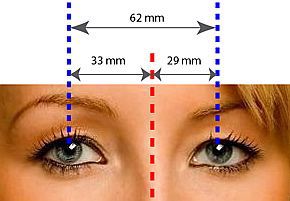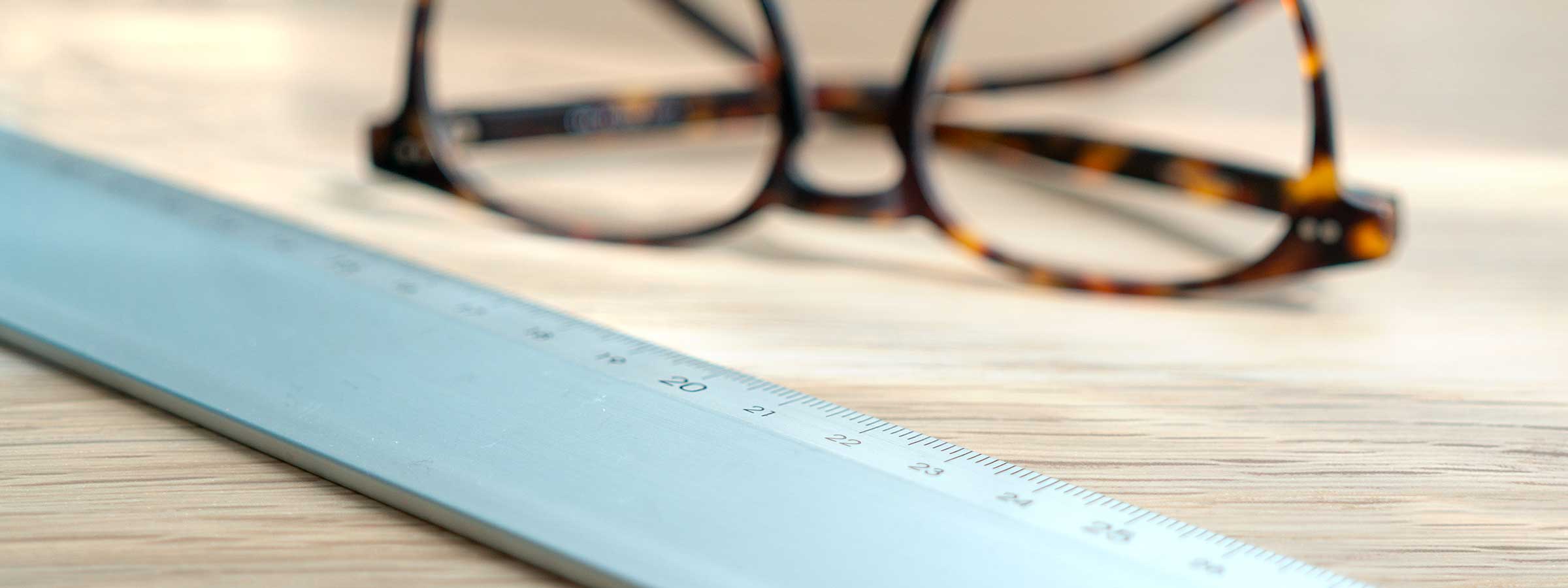
.png)
The two numbers are measurements of the distances from the centers of each pupil to the center of the bridge of the nose. If two different PD numbers are listed on your prescription, this is referred to as a monocular PD.

That is called a binocular PD, which can be used to order most prescription glasses.
PUPIL DISTANCE FOR GLASSES HOW TO
How To Read Pupillary Distance on a Prescriptionĭo you already have a prescription from an optometrist? If so, pupillary distance is often included on your prescription, labeled as “PD.” However, if you don’t want to (or can’t) visit an optometrist, there are many ways to measure your pupillary distance at home yourself! Though not exact, these methods will get you somewhat close to what your actual PD is. These are the two most accurate ways to measure.

Or visit your local optical store - some opticians will measure it for you with a pupilometer, either at no cost or for a small fee. Just be sure to ask them to include the PD measurement on your prescription, as it’s not always automatically included. The best way to get an accurate pupillary distance measurement is by going to an optometrist for an eye exam. How Do You Measure Pupillary Distance At Home? Pupillary distance can vary widely-between about 51 mm and 74 mm for women and about 53 mm and 77 mm for men. This can result in effects like blurred vision, double vision, headaches, fatigue, and nausea.įor adults, the average pupillary distance is about 63 mm, but you don’t want to assume yours will be the same. Without correctly measuring your pupillary distance, you'll essentially be looking through the wrong part of the lenses. In other words, it ensures the prescription power aligns with the centers of your eyes. Knowing this measurement is essential when ordering a new pair of prescription glasses, as it determines where the optical centers on each lens should be placed. Once you've got your PD measurement, input the numbers in your cart and you're good to go.Pupillary distance (PD) is the space-measured in millimeters (mm)-from the center of one pupil to the center of the other. Repeat the process again to make sure the measurement is right. Use the number that lines up with your right pupil. Let your friend repeat the process on your left eye by measuring the distance from your left pupil To be certain of the result, let your friend measure a few more times to Measure the distance from your right to your left pupil. Your right so the zero end lines up with your pupil. Look straight ahead with both eyes open facing your friend. METHOD TWO (Making someone help you measure). you also need to measure the distance from two pupils to the center of nose respectively to make sure that if you have two PDs(OD & OS). Close your right eye and note the reading directly over your left pupil. Close your left eye and align the ruler’s zero to the center of your right pupil. Position yourself approximately 8 inches (20cm) away from a mirror or yourself arm’s length from your friend. a) Measuring it by yourself and b) Making a friend help you measure. There are two methods one can measure the pupillary distance. How then do we measure the Pupillary Distance (PD)? Pupillary distance is an essential value in an eyeglass prescription because it helps ensure that the optical centers of the lenses are aligned properly with your pupils. Nevertheless, it's important to note that pupillary distance can vary among individuals. The average pupillary distance (PD) for women is approximately 60 mm, while for men, it is around 64 mm. The average adult pupillary distance (PD) value range is typically between 54 and 74 millimeters. It is the measurement, in millimeters, between the centers of your two pupils.


 0 kommentar(er)
0 kommentar(er)
